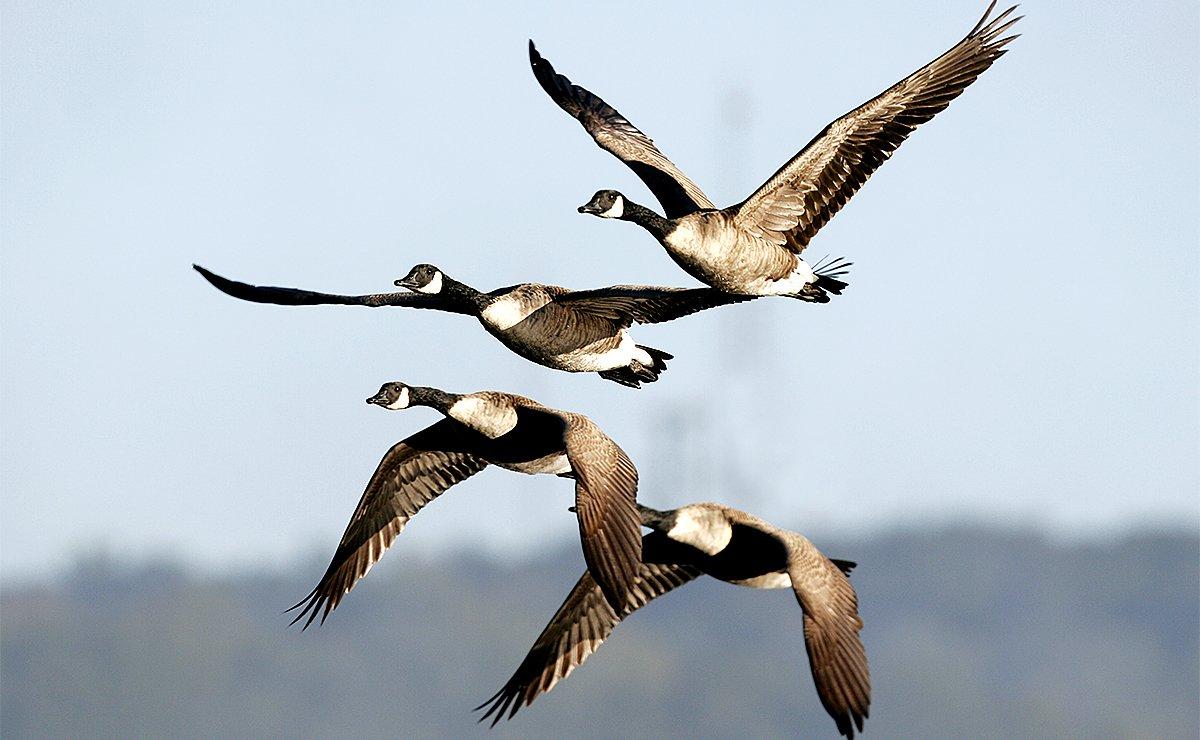Did those honkers seemingly disappear overnight? Use these tricks to get back on them
Geese have a wry sense of humor. Don't believe me? What else explains the preseason switcheroo?
After monitoring local Canada geese locked into consistent patterns for weeks during late summer, many waterfowlers view opening day as a potential slam-dunk. Then those seemingly predictable neighborhood honkers might switch routines and locations days or even hours before seasons open, leaving flummoxed hunters staring at empty skies and fields. This occurs frequently in areas where most small-grain fields — oats, wheat or barley, for example — are relatively tiny, as hungry flocks of honkers can quickly exhaust the food at such spots. But it also happens somewhat randomly at larger roost and loafing areas, when geese exhibit staging-type behavior and relocate to other spots, which, not coincidentally, historically see less hunting pressure.
The phenomenon is frustrating, but it points out an easy lesson: Early-season goose hunters must scout proactively to identify several opening-day plans and then be ready to react quickly. Those backup options fall into three primary categories.
Plan B Fields
Hunters love to watch geese at hot feeds, but they often neglect to locate other fields honkers might favor later. Sure, keep tabs on flocks that regularly visit a field, but then dedicate more time to finding nearby spots with similar food sources. Remember, early-season geese often don't fly too far from the roost to feed. If they exhaust the food at a wheat field, for example, they might simply jump the next morning to the wheat field across the road.
You can accomplish much of this reconnaissance during the growing season by identifying potential feeds within a reasonable distance of a roost. Online aerial maps provide a solid outline. Back that up with boots on the ground to confirm fields with crops that might attract early honkers.
Also, keep tabs on the crop harvest, as geese might switch fields when a better food source becomes available. Late-season hay cuttings sometimes attract lots of geese eager to feed on greens. Likewise, green-chopped cornfields can be big draws.
Loafing Spots
Early-season water hunts don't hold the same appeal as field shoots, but they can be great options, especially when birds abandon a field and you can't find the new X.
Seek waters where flocks loaf during midday between feeding flights. Likely areas include river backwaters, stock ponds or smaller lakes or marshes between feeds and roosts.
Again, online maps let you identify potential spots well before the season. You might have to follow geese as they leave a feed to determine their destination. As with fields, it's also wise to find several loafing areas, as gaining access to many such spots can be tough, especially if they're near roads, in suburban areas, or close to farms or houses.
Traffic Areas
When geese switch routines and you can't find or hunt the X or a loafing spot, identify areas where you can set up a spread and run traffic along goose flight routes. Obviously, it's best to find spots near or between roosts or feeding areas, where you'll at least have good odds of being able to call and flag to honkers, hoping to attract them in for a look. Good potential spots include fence lines, cut crop fields or small waters. Try to get an idea of the general direction geese travel during mornings and evenings, and then locate the best setup option near that route.
Admittedly, this approach can be tough, especially when early-season geese get locked into patterns. However, never underestimate the power of motion and good calling, as they can sway routine-bound geese into sliding close for a pass or two.
Be Ready
Whatever your approach, continue scouting right to opening day and during the season. Anticipate change, and be ready for switcheroos as they occur. You won't always guess correctly, but having multiple options will keep you in the early-season game.
(Buy alert: Pro Performance Skull Cap Beanie)
Click here for more Realtree waterfowl hunting content. And check us out on Facebook.







